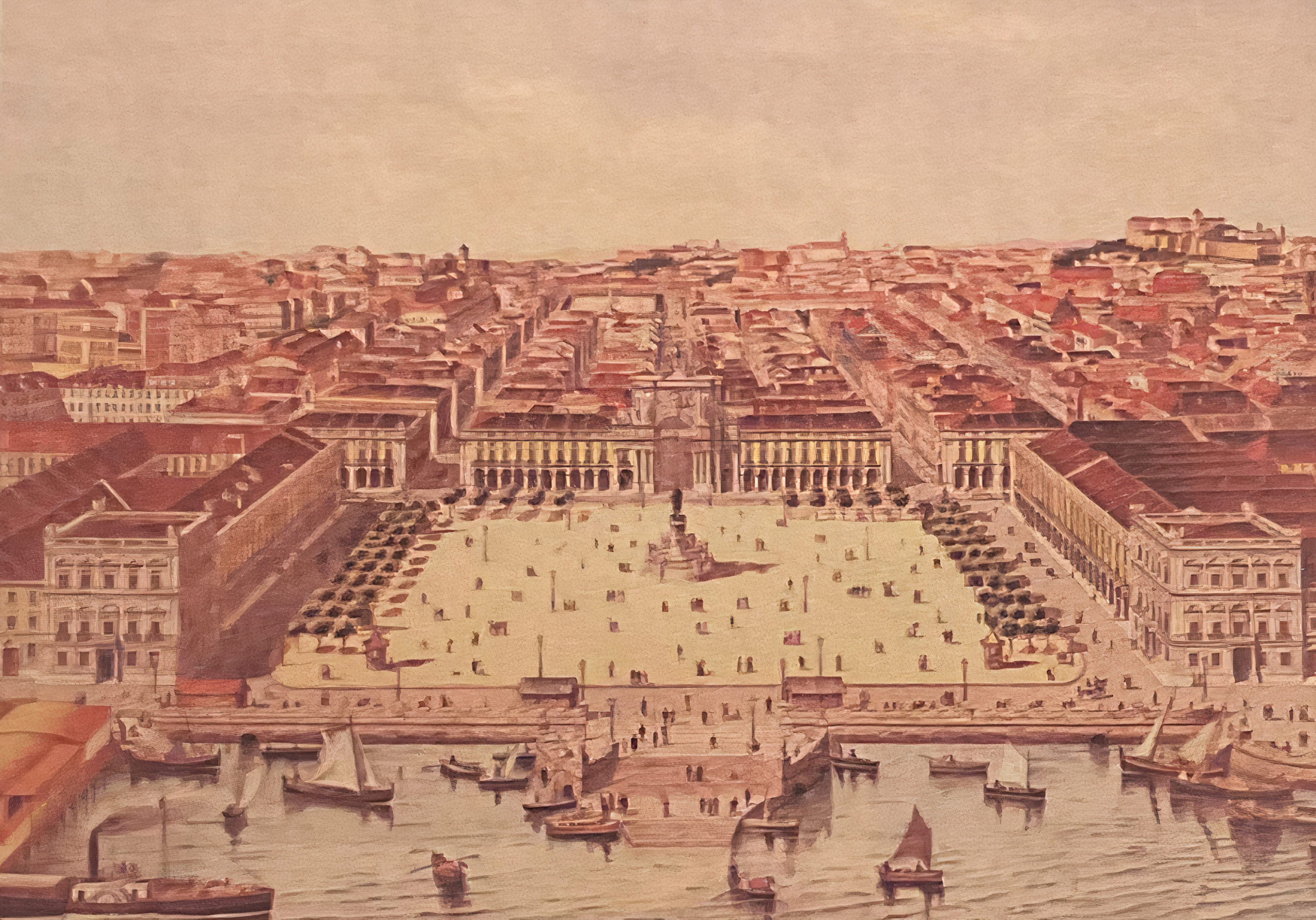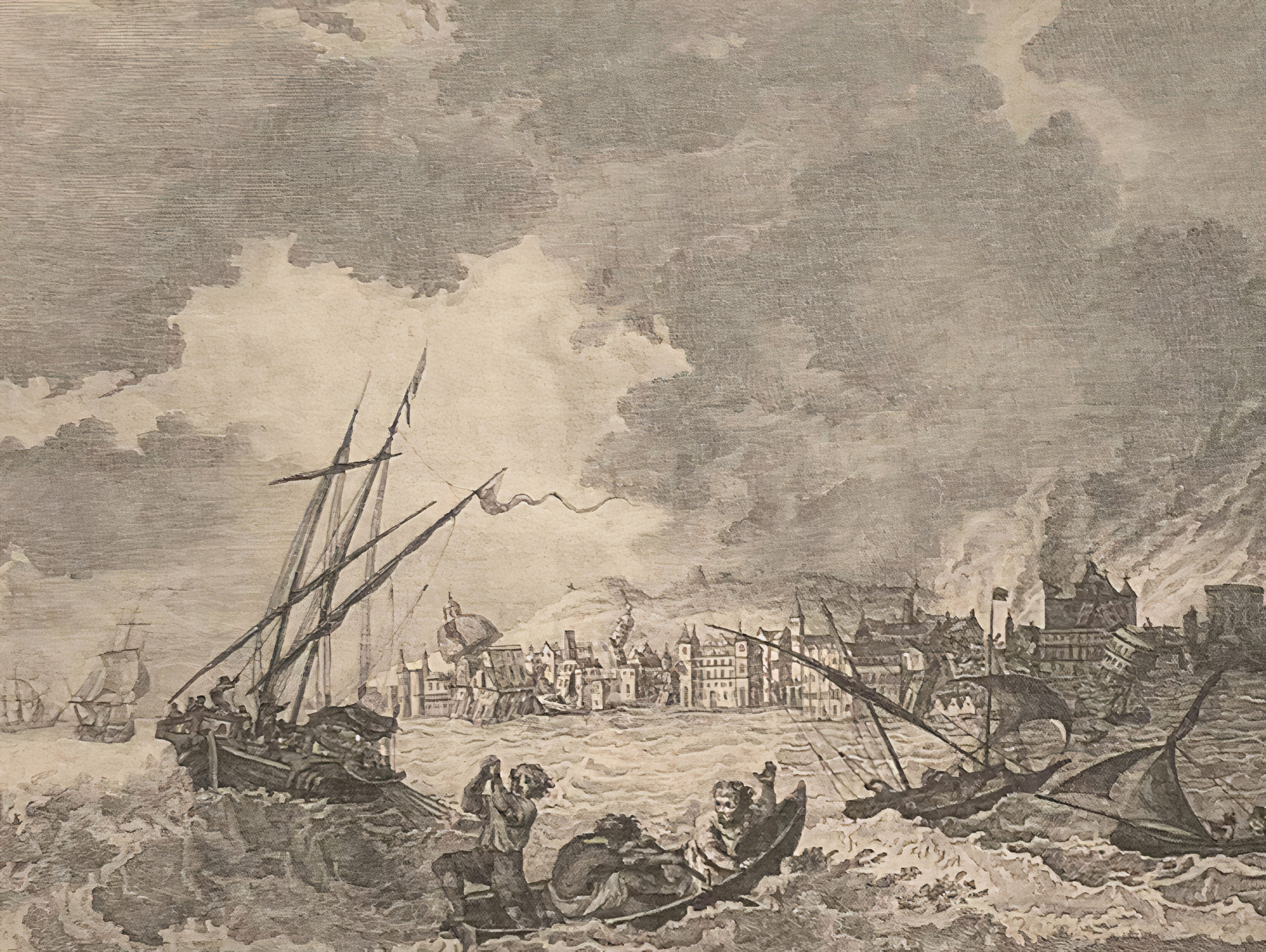Turkey, Syria and Earthquake Responses: Lessons from the Great Lisbon Earthquake of 1755
The earthquakes in Turkey and Syria bring back memories of November 1, 1755, All Saints Day, when the great Lisbon earthquake occurred.
As Turkey and Syria struggle with the aftermath of natural disaster, the Portuguese response to the natural disaster of 1755 bears remembering.
The Lisbon earthquake was probably on the scale of 8.5 to 9.0 in magnitude on the Richter scale with three aftershocks. Shortly afterwards a Tsunami, a towering tidal wave very rare in the Atlantic Ocean, inundated Lisbon. This was followed by fires which raged for a week
The destruction was enormous.
Over 55 convents and monasteries were severely damaged. The riverfront quay sank and disappeared. The royal palace on the river front was destroyed as was the recently opened royal opera house. It is difficult to estimate the number of deaths. Accounts at the time spoke of tens of thousands. In all likelihood 10,000 to 15.000 were killed. The population of Lisbon at the time was somewhere between 160,000 and 200,000. About one third of the city was in ruins.
The aftershock caused widespread damage elsewhere in Portugal and were felt as far away as Venice, Southern France, Morocco, and North Africa.
In Britain George II asked the House of Commons to provide “speedy and effectual relief” and the House of Commons responded by allowing the treasury to appropriate £100,000 in special provisions, clothing and tools. In Portugal, the monarch, Dom José, was completely paralysed and terrified by the earthquake. He was so frightened that he refused to sleep again in a building made of stone. The royal family lived in wooden and canvas houses until the end of the 18th century.

The task of responding to the earthquake fell to his very able minister, Sebastião José Carvalho e Melo (1699-1782) who later was given the title of the Marquês de Pombal in 1769.
The scale of the disaster was such that the removal of bodies was essential to prevent the spread of disease. Pombal persuaded the patriarch of Lisbon to give permission for bodies to be collected, put on boats, sent out into the Atlantic Ocean and dropped overboard without funeral rites. He brought in troops from the garrisons in the hinterland to contain disorder. He gave magistrates the power to act instantly in the case of looting or murder.
In his singularly spidery handwriting on November 3rd 1755, just three days after the earthquake, he outlined his immediate priorities. The first was to dispose of the dead in order to avoid disease; second to feed the population (to achieve this and deter speculators, Pombal imposed ceilings on the price of bread); and third to impose public order.
In January 1756 Pombal issued instructions that an investigation take place as to the effects of earthquake throughout Portugal. This inquérito conducted in all the parishes and was composed of 13 specific questions.
They included questions as to the precise time of the earthquake, the direction from which it struck, how many houses were destroyed, how many died, what measures had been taken by priests, military officers and civil magistrates, how many people were in each parish, and of what sex, whether there had been a shortage of food. 250 replies were received in six months and 600 over the course of 1756. They provide the first scientific assessment of an earthquake’s impact.
Pombal turned over the planning process for the reconstruction of Lisbon to Portugal’s military engineers.
Three were to be critical. Manuel da Maia (1677-1768) who in 1755 was almost 80 years of age, and was the chief military engineer of the country and had been the tutor in mathematics and physics to the King while he was the heir apparent. Eugenio dos Santos (1711-1760) was in his mid-forties and was a colonel in the engineering corps. And Carlos (Karoly) Mardel (c. 1695-1763), a Hungarian emigré in his late fifties who had served in the Portuguese military engineering corps since 1733 when he came to Portugal to work on the Lisbon aqueduct under Manuel da Maia’s direction. The Lisbon aqueduct survived the earthquake intact.
All three men were experienced professionals, accustomed to overseeing the construction of large-scale civil and military buildings and fortifications. Pombal gave to Manuel da Maia the job of drawing up a “dissertation”, outlining the fundamental issues to be addressed, and how these, once defined, might be handled most efficaciously. In the meanwhile, Pombal introduced legislation prohibiting any building, action, or sale of property before the master plan was devised. Maia quickly turned in his observation to Pombal on December 4, 1755.
The key, Maia observed was that the King had not insisted that the Royal Palace be reconstructed on its previous site. This Royal aversion to returning to sleep in Lisbon relieved the urban planners of an enormous impediment. If the King was prepared to give up prime real estate on the Lisbon waterfront it would be difficult for anyone else not to do so.
Maia’s proposal was quickly approved.
It was the most radical option; rebuilding the city on its previous site. The detailed plan drawn up by Eugênio dos Santos and Carlos Mardel involved the total reinvention of the city’s core with a complete overriding of previous street patters and property lines. The plan substituted the old royal square with a new “square of commerce” with identical buildings on three sides. Four Main Streets with cross street set at right angles ran inland from the “praça do comércio” to two newly reconstructed parallel squares with identical buildings.

Legislation was passed in May 1758 to provide for the assessment and relocation of property rights. Geometric measurements were substituted for actual locations so that property owners could be compensated for the land, houses, reallocated under the new urban plan.
The new buildings were to follow standardized uniform dimensions. Most important they were all to be made earthquake-proof by means of a pioneering anti-earthquake flexible wooden cage formed of diagonal trusses reinforcing a horizontal and vertical wooden frame. The plans were drawn up under the supervision of Eugênio dos Santos and Carlos Mardel, but every design, every façade, down to the smallest detail, bore Pombal’s signature.
In Turkey, much less in Syria, although both nations have authoritarian rulers, much like Portugal did with the marquês de Pombal in the mid 18th century, neither president Recep Tayyip Erdogan, nor president Bashar al-Assad, appear to have the enlightenment needed to allow either man to conceive of the radical responses now desperately needed to deal with the post-earthquake crisis, and then the vision to reconstruct their earthquake devastated land.
History it seems unfortunately does not always bring progress.
But both rulers might at the very least look back at Pombal’s response to the great Lisbon earthquake of 1755 to see what was achieved in very similar circumstances.
Featured Graphic: The Lisbon Earthquake and Tidal Wave (Dutch print).

